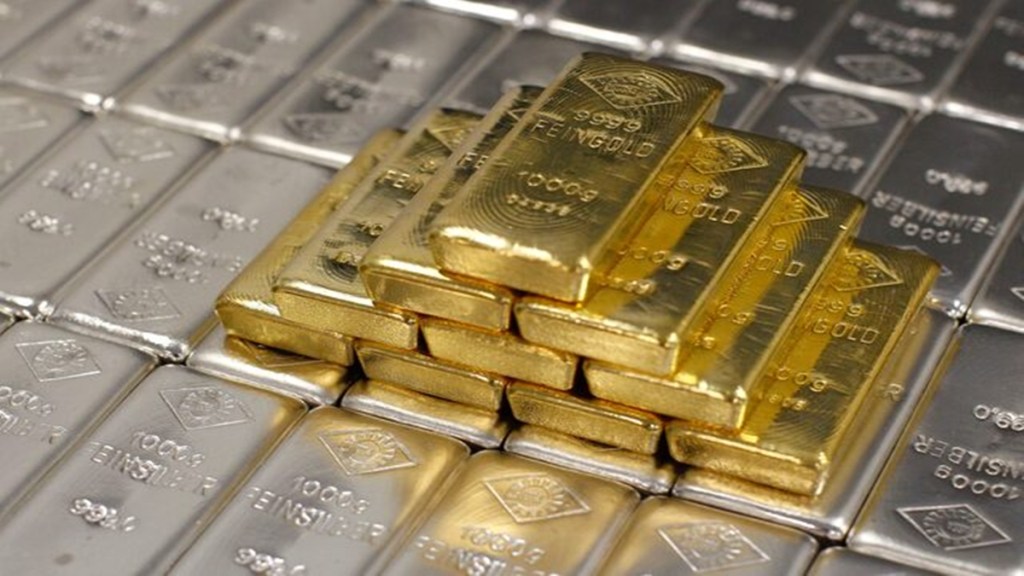The gold price dropped more than 1% to trade below $3,000 on Monday. Currently, it has bounced back a bit and trades steadily around $3,023, down by 0.37 over Friday’s close. Gold is up by 28% over the last 12 months. The gold price today in India is Rs 90,380.
The initial dip in gold price could have been due to investors liquidating positions to secure profits, possibly covering losses or margin calls on falling asset valuations, fueled by concerns about a global trade war.
“The price of gold fell from all-time highs as hedge funds saw the largest margin calls since COVID-19. In reaction to US President Trump’s tariff announcements, prices first surged to a new record high of $3200/oz last
week, but in the latter two days of the week, they dropped back well below $3000.
Gold frequently faces initial pressure during periods of heightened risk aversion. This is because market players frequently sell their gold holdings to make up for losses in other areas. Typically, gold recovers its losses quickly, and this time might be no exception,” says Dr. Renisha Chainani, Head – Research at Augmont.
Gold touched a lifetime high of $3,167.84 last week, driven by safe-haven inflows as President Trump announced sweeping new tariffs.
Global equities are looking to sink for the third consecutive trading day on Monday. Nasdaq futures are down more than 5% and Dow lost more than 1300 points while Nikkei was down more than 8% at the open,
The market rout on Monday is attributed to the White House’s silence and no softening in its stance regarding aggressive tariffs on major trading partners. Trump’s trade war escalation is causing a significant market decline due to concerns about a potential recession in the global economy. Trump’s 10% import tax is now in effect, with steeper tariffs for many countries expected to be implemented later this week.
The other big concern for markets today is the warning from Fed chief Powell, who has raised concerns about tariffs, citing potential higher inflation and slower economic growth, highlighting the challenging future for policymakers.
But, tailwinds for gold to reach higher levels seem to be in place. Mohamed El-Erian, chief economic advisor at Allianz, issued a warning on Friday, stating that aggressive trade policies and sluggish GDP have increased the likelihood of a U.S. recession to 50%.
He also pointed out that core PCE, the Fed’s favored inflation indicator, posted its largest monthly advance in more than a year, indicating that inflation expectations are rising. A tailwind for gold prices could result if the Fed remains restrictive as growth slows, and yield also falls.
This week’s CPI and Fed minutes will be used to assess if inflation concerns will revive the gold market’s bullish trend.
Meanwhile, Silver too has resumed the upward journey after a big drop in prices last week. Silver trades around $30, up by 1.6% on Monday, now up by 7% over the last 12 months. For 1 kg, the Silver price today in India is Rs 85,570.
Last week, Silver fell below $30 per ounce, the lowest level since January 14th, bringing weekly losses to over 12% as the escalating trade war fueled concerns over global demand and recession risks.
Also Read: Silver, the New Gold: What is behind the shiny metal’s record-breaking rally?
However, both gold and silver are looking volatile as traders continue to sell at every bounce to set off losses on their other investments and to meet margin calls on their trades.
“If geopolitical tensions persist and US trading partners respond with retaliatory tariffs, gold is probably going to continue to
gain from safe-haven flows. It is reasonable to predict that gold will continue to be volatile in the foreseeable future at this point. For silver, I believe that the worst is over, and silver will likely consolidate around $30 for some time. At these levels, buying will likely resume because there is still a demand-supply imbalance, which will keep prices stable, adds Dr. Chainani
Also Read: Gold price retreats from record highs; what’s behind the latest gold price drop?

